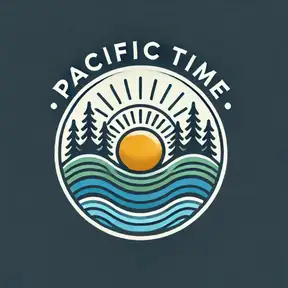
05 What If Nature Defined Our Borders in the Cascadia Bioregion? With Yogi Uriah
Bioregionalism envisions borders set by the natural environment and there’s a grassroots movement for it that envisions carving “Cascadia” out of the Pacific Northwest wilderness.
In this episode of Pacific Time, host Greg Amrofell talks with Yogi Uriah, a passionate grassroots organizer and leader with the Cascadia Department of Bioregion. Yogi eloquently explores the concept of bioregionalism—an idea that redefines our understanding of boundaries, not as arbitrary political lines, but through natural landscapes, ecosystems, and cultural interconnections.
In this episode of Pacific Time, host Greg Amrofell talks with Yogi Uriah, a passionate grassroots organizer and leader with the Cascadia Department of Bioregion. Yogi eloquently explores the concept of bioregionalism—an idea that redefines our understanding of boundaries, not as arbitrary political lines, but through natural landscapes, ecosystems, and cultural interconnections.
Highlights of the Episode:
✔️ Defining Cascadia: Yogi describes Cascadia as a vast region connected by watersheds stretching from Alaska through British Columbia, Washington, Oregon, and Northern California.
✔️ Natural vs. Political Boundaries: How the natural environment shapes culture and community identity, distinct from arbitrary political lines.
✔️ Symbols of Cascadia: The power of symbols such as the Douglas Fir tree and the iconic Cascadia flag to unify and inspire the movement.
✔️ Grassroots Movements and Climate Action: Insights into how the Cascadia Department of Bioregion mobilizes community action through initiatives like guerrilla gardening and mutual aid programs.
✔️ A Climate Haven: Discussing the West Coast’s potential as a refuge from climate change impacts and the implications of increased migration.
✔️ Cultural Connections and Differences: Yogi emphasizes the unique identity within the Cascadia bioregion compared to broader national affiliations, and discusses the critical importance of including indigenous communities and practices in the bioregional vision.
✔️ Defining Cascadia: Yogi describes Cascadia as a vast region connected by watersheds stretching from Alaska through British Columbia, Washington, Oregon, and Northern California.
✔️ Natural vs. Political Boundaries: How the natural environment shapes culture and community identity, distinct from arbitrary political lines.
✔️ Symbols of Cascadia: The power of symbols such as the Douglas Fir tree and the iconic Cascadia flag to unify and inspire the movement.
✔️ Grassroots Movements and Climate Action: Insights into how the Cascadia Department of Bioregion mobilizes community action through initiatives like guerrilla gardening and mutual aid programs.
✔️ A Climate Haven: Discussing the West Coast’s potential as a refuge from climate change impacts and the implications of increased migration.
✔️ Cultural Connections and Differences: Yogi emphasizes the unique identity within the Cascadia bioregion compared to broader national affiliations, and discusses the critical importance of including indigenous communities and practices in the bioregional vision.
Resources & References
Join the movement: Subscribe on Substack @PacificTimePodcast
💬 Participate in active, civil conversations with your neighbors on the West Coast who are asking ‘What if…?’ Come to the community center for Pacific Time at Substack.
Follow:
📲 Pacific Time is making good trouble asking questions about the future of the West Coast on BlueSky, Instagram, and Facebook
Listen:
🎧 Pacific Time Podcast is on Spotify, Apple Podcasts, and many other platforms. Follow, share, and leave a review.
